Mexican Food Dishes: Basic Overview
Common Ingredients
Common Cooking Methods
Courses
Meals
Key Taste
Eating Etiquette
Meal Presentation
Culinary Festivals
Influence and Fusion
Popular Types of Mexican Dishes
-
Sandwiches
In Mexico, sandwiches, known as “tortas,” are hearty and flavorful, filled with ingredients like avocado, meat, and beans, often enjoyed as a quick meal or snack.
-
Snacks
Mexican versions of snacks range from street food to savory bites in small, delightful portions.
-
Soups
Characterized by rich broths and a mix of indigenous and Spanish influences, soups are a staple in Mexican cuisine.
-
Sauces
Used in Mexican cooking, these combine native chilies, herbs, and spices, adding essential depth and complexity to a wide array of dishes.
-
Grilled and Barbecued Dishes
These dishes in Mexico are often heavily seasoned to bring out more flavor when cooked on high heat.
Mexican dishes are culinary creations that reflect the history and cultural fusion of Mexico. It has its roots in Mesoamerican cuisine, with early influences from the Olmec, Maya, and later from various Mesoamerican groups such as the Aztecs.
These dishes are known for using a diverse source of native ingredients, usually corn, beans, or avocado. Plus, Mexican dishes vary widely across the country, leading to distinct regional cuisines such as Baja Med, Chiapas, Veracruz, and Oaxacan.
Aside from maize being the main crop, other produce like tropical fruits, insects, and vegetables are also enjoyed by Mexicans.
Also, the street food of Mexico uses various spices and herbs, such as chili peppers, cilantro, and garlic, which not only enhance flavor without adding calories but also provide anti-inflammatory and metabolic benefits.
To know more about Mexican dishes, you should not miss these culinary suggestions that go deep into their components and history. Then, let your curiosity run free through some interesting combinations of these Mexican specialties with beverage options.
List of 32 Popular Mexican Dishes with Filters
These are the 32 popular specialties of Mexico just for you to explore according to their popularity.
Also, you can uncover the dishes in a manner that includes ordering by alphabet, primary components, flavor profiles, culinary techniques, varieties of dishes, meal categories, and worldwide distribution.
Plus, you should make full use of the interactive filter system to have a fun time going through these dishes, including traditional, national, street food, and exotic options.
Tacos
- Street Food
- Traditional
Tacos are a type of Mexican food of a corn or wheat tortilla folded or rolled around a filling. This mix of fillings features different kinds of meat, such as beef, pork, or chicken, or other ingredients, such as beans, cheese, or vegetables.
These wrapped tortillas are a common street food in Mexico, dating back to before the Spanish colonization of Mexico, when the indigenous people used tortillas to wrap meat and fish.
In addition, the population pairs tacos with salsa, guacamole, sour cream, lettuce, onion, tomatoes, or chiles. Furthermore, the tortilla shells for tacos even come in hard or soft varieties.
Guacamole con Chapulines
- Exotic
- Traditional
Guacamole con chapulines is a Mexican mix of guacamole, made using avocado, and fried grasshoppers called chapulines.
It’s a traditional dish in the state of Oaxaca, a region known for its abundance of grasshoppers. Guacamole con chapulines are often added to tortillas, tacos, and many dishes for an additional crunchy profile.
Burrito
- Street Food
- Traditional
A burrito is a type of Mexican specialty featuring a wheat flour tortilla wrapped around a filling of various ingredients. The filling can include meat, fish, cheese, beans, rice, vegetables, and sauces.
For a burrito, the tortilla is usually sealed and sometimes grilled or steamed. Burritos are a common street food in northern Mexico, especially in Ciudad Juárez, where they originated.
As for serving, people serve burritos dry or wet and eat them by hand or with utensils.
Quesadilla
- Traditional
Quesadillas were first created in the 16th century in Northern and Central Mexico using corn tortillas. However, they often made quesadillas by stuffing them with pumpkin and squash during this period.
Like other wrapped dishes in Mexico, today’s quesadilla include meat, fish, cheese, beans, rice, vegetables, and sauces. Also, the tortilla is often grilled on a griddle or stove for a crunchy texture.
These Mexican specialties are usually folded in half and eaten by hand, or cut into wedges and served with sauces or toppings.
Enchiladas
- Traditional
Enchiladas are a special dish in Mexico that has corn tortillas with fillings covered in sauce for baking. It had appeared in meals since the time of the Aztecs when they wrapped various foods in tortillas.
When served, enchiladas go well with different toppings, such as sour cream, lettuce, tomato, guacamole, or cilantro.
Chilaquiles
- Traditional
Chilaquiles is a dish commonly served in many restaurants in Mexico, combining triangular fried corn tortillas with various ingredients.
In Mexico, these crunchy tortillas are a favorite breakfast or brunch item that makes use of leftover tortillas and salsa sauce. Some versions even customize them with cheese or other meat varieties.
Pozole
- National
- Traditional
Pozole is a traditional Mexican soup that has existed since pre-Hispanic times. It was initially used in Mexican ritual sacrifices.
There are different versions of pozole, made using chicken, pork, or vegetables. Additionally, the soup is often garnished with cabbage and shredded lettuce.
On New Year’s Eve, pozole is a favorite soup of many Mexicans. The flavorful soup is also an important part of celebrating many Hispanic holidays and events.
Mole
- Traditional
Mole is a famous sauce in traditional Mexican cuisine, blending slightly rich flavors of nuts with spices and chili. However, chocolate is the main ingredient to provide the main color and flavor of this sauce.
It was first made in pre-Hispanic Mexico, with some have suggested that it was invented by a nun in Puebla.
In Mexico, there are about 7 types of mole sauce with small tweaks. During the cooking process, people add Mexican mole to create a thick sauce that coats the ingredients.
Carnitas
- Street Food
- Traditional
Carnitas is a Mexican specialty of slow-cooked pork or chicken until the meat is completely tenderized.
This Mexican meat dish is then either shredded or chopped and often served with a spread of fresh cilantro, onions, salsa, guacamole, alongside tortillas and beans.
As a dish of Michoacán, the locals often simmer the carnitas meat in large copper pots with lard and a pinch of salt. Carnitas is a common dish for many festive events in Mexico.
Tostadas
- Street Food
- Traditional
Tostadas are corn tortillas deep-fried in hot oil before topping them with a few slices of cheese, meat, or seafood in Mexico.
The tortillas for making tostadas can be flat or curved, and made of corn or wheat. Ideally, tostadas are made using stale tortillas, with toasting being another option to make them crunchy aside from deep-frying.
Elote
- Street Food
- Traditional
Elote is simply Mexican corn on the cob but with various spices. After grilling until it’s perfectly golden and aromatic, the corn is slathered in mayonnaise or sour cream to make it extra creamy.
Then, it’s sprinkled with spicy chili powder and a squeeze of tangy lime juice to enhance the flavor. Elote is a perfect side for complex dishes like enchiladas.
Huevos Rancheros
- Traditional
Huevos rancheros are a Mexican dish featuring fried eggs on tortillas, topped with spicy salsa. Originating in rural Mexico as a meal for farm workers, this dish includes a salsa made from tomatoes, chili peppers, onions, and more, with either corn or wheat tortillas.
Commonly enjoyed for breakfast or brunch, this hearty serving sometimes comes with beans, rice, guacamole, avocado, and cilantro.
In other regions of Mexico, huevos rancheros offer different sauces, cheese, sour cream, lettuce, meat, or even poached eggs instead of fried.
Taquitos
- Street Food
- Traditional
Taquitos are Mexican dishes featuring fried or baked tortillas rolled around fillings like meat, cheese, or chicken. Typically served with toppings or sides like sour cream, guacamole, salsa, and cheese, taquitos offer a crispy experience.
Created in Mexico and popularized by Mexican immigrants, these crispy treats are also known as flautas, tacos dorados, or rolled tacos in different areas depending on their sizes.
Chiles en Nogada
- National
- Traditional
Chiles en nogada is a Mexican combination of local fruits, ground meat, or spices stuffed inside poblano pepper. Also, the dish has a layer of walnut cream sauce that comes in a white color.
The stuffed dish was first created in Puebla when nuns made it to give to Agustin de Iturbide, who was a Mexican Army General and played an essential role in the war of Mexican independence.
Authentic chiles en nogada boasts the three colors of the Mexican flags; red, green, and white. These colors come from pomegranate seeds, the poblano peppers, and the walnut cream sauce, respectively.
Cochinita Pibil
- Traditional
Cochinita pibil is a shredded pork stew from Mexico marinated with various flavors and wrapped in banana leaves when cooked. This dish is also well-loved in Belizean gastronomy.
Thanks to the special marinade mixture, the pork of cochinita pibil is tender while providing an appealing orange color. In Yucatec Mayan communities, the shredded pork stew is a traditional creation for serving with corn tortillas.
Machaca
- Traditional
Machaca is a Mexican dish made from shredded beef or pork cooked until tender. Seasoned with an array of spices, it can be enjoyed in flautas, tacos, burritos, or with eggs, onions, peppers, and tortillas.
Originating from northern Mexico, where ranchers and cowboys preserved meat by drying it with spices, machaca has also gained popularity in the southwestern US, where it’s known as machacado or carne seca. Often, the meat requires drying, and then rehydrating for cooking.
Torta Ahogada
- Street Food
- Traditional
Torta ahogada is a Mexican sandwich from the streets of Guadalajara, Jalisco, featuring salty, crunchy bread filled with pork, beans, and onions. Plus, the sandwich has a spicy or mild sauce to enhance the flavor.
Interestingly, the creation of torta ahogada was an accident when a vendor dropped a sandwich into salsa. Typically eaten with hands, it’s served with onion rings, radishes, avocados, and chili peppers.
Birria de Chivo
- National
- Traditional
Birria de chivo is a goat stew of the Jalisco state in Mexico, also known as Chivos.
According to the story, the goats severely damaged the crops, so they were given to the natives for breeding by the Spaniards. Thus, locals use goat meat to make this stew.
Today, Mexicans opt for other proteins like pork, chicken, beef, or fish to bring new flavors to the recipe. Originally, the meat was put in maguey pencas for cooking, but it is replaced by the pot today.
Nowadays, the remarkable stew is a part of many special occasions like weddings, Christmas, and Easter. The stew even has a baked version called tatemadas.
Tamale
- National
- Traditional
Tamale is a traditional Mexican delicacy of corn dough, filled with sweet or savory ingredients, and wrapped in a leaf for steaming. The dough requires a thorough soaking and cooking in an alkaline solution before encasing meats, cheeses, fruits, vegetables, herbs, or chilies.
Commonly, locals wrap tamales in either corn husks, banana, or plantain leaves. These steamed treats are enjoyed for breakfast, dinner, or special occasions.
Interestingly, making and cooking tamales is a custom in Mexico that mainly features women.
Pipián
- Traditional
Papian is a Mexican sauce with a distinctive green color from the tomatillos. Additionally, the dish’s complexion is enhanced with puréed green and some ground pumpkin seeds to thicken the mix.
For serving, pipián sauce makes for a great pick with carnitas, roast vegetables, or poultry.
Tlayuda
- Street Food
- Traditional
Tlayuda is a traditional Oaxacan offering in Mexico that has a large, thin, tortilla topped with beans, lard, cheese, meat, and salsa. Used as a base for tlayuda, the tortilla is cooked on a clay griddle until slightly hard and stored in a palm leaf basket.
In terms of toppings, they vary by region and preference, often including tasajo (Oaxacan beef), chorizo (spicy sausage), or cecina enchilada (chili-powdered pork). Often served open-faced or folded, it’s a popular street food in Oaxaca and regions like Mexico City, Puebla, and Guadalajara.
Aguachile
- Exotic
- Traditional
Aguachile is a traditional dish from Sinaloa consisting of shrimp and fish marinated in a spicy and sour liquid of chiltepin peppers, lime juice, salt, and water.
The seafood creation is served with cucumber and onion slices, and sometimes avocado or cilantro.
Aztec Soup
- Traditional
Aztec soup, also known as sopa azteca, or sopa de tortilla, is a traditional Mexican soup coming from the ancient Aztec civilization.
It is made with a tomato-based broth flavored with dried pasilla or ancho chilies, garlic, onion, and oregano. The soup is served hot over crispy fried tortilla strips and topped with avocado, cheese, sour cream, cilantro, and sometimes chicken.
Gorditas De Nata
- Street Food
- Traditional
Gorditas de nata are a type of fried pastry coming from the state of Hidalgo, Mexico. They are made with a dough filled with sweet or savory ingredients.
These pastries are traditionally eaten on December 12, the day of the Virgin of Guadalupe, as an offering to the ancient goddess Tonantzin. They are also a popular street food and snack in Mexico.
Gorditas de nata are usually served with coffee, tea, or hot chocolate. Furthermore, these pastries are a special treat at churches on Sundays.
Discada
- Street Food
- Traditional
Discada is a hearty meat and vegetable dish from the Northern states of Mexico cooked on a metal disc over an open fire. Interestingly, farmers in the region prepare discada using plow discs.
The meats, including beef, bacon, ham, sausage, and chorizo, come together with vegetables in a spice mixture that sometimes comes with beer or cola.
Discada can be eaten as tacos with tortillas or as a main course with rice, beans, guacamole, and salsa.
Pescado Zarandeado
- Street Food
- Traditional
Pescado zarandeado is a popular grilled fish specialty in the coastal area of Mexico Known as stirred fish, its name zarandeado means to move or shake a lot.
Furthermore, Mexicans used a wooden grill called the Zaranda to grill fish in the past. However, they have replaced it with metal grills to make it easier today.
Camarones a la Diabla
- Traditional
Camarones a la Diabla is a shrimp dish that means “shrimp of the devil” in Mexico. Locals materialize the dish by incorporating shrimp in a fiery red sauce made from chili peppers, tomatoes, garlic, onion, and oil.
The sauce’s heat varies with the type and quantity of peppers used. Aside from bread or tortillas to absorb the sauce, Mexicans enjoy the fiery shrimp dish with rice, beans, guacamole, and salsa.
Esquites
- Street Food
- Traditional
Esquites are a type of Mexican street food of cooked corn kernels served in a cup or a corn husk. They are seasoned with various ingredients, such as lime juice, chili powder, cheese, and mayonnaise.
This creamy combination is often eaten as a snack or an appetizer accompanied by different toppings and variations.
Alegría
- Traditional
Alegría is a candy in Mexico that uses puffed amaranth seeds and honey or sugar. The sweet is a traditional candy in Mexico City named after the Spanish word for joy.
It’s often shaped into colorful bars or figures. Additionally, alegría also includes nuts, seeds, or dried fruits for extra flavor and texture.
Dorilocos
- Street Food
Dorilocos is a Mexican snack first sold on Antojito street in the 1990s. Today, it is common on many streets of Mexico.
These are servings of chip bags filled with hot sauce, cream, vegetables, and chips to give a wonderful fusion of flavors. Since it is a side dish and street food, it is prepared pretty liberally.
Menudo
- National
- Traditional
Menudo is a thick Mexican stew of cow’s stomach (tripe) in a broth with a red chili pepper base. It is cooked for several hours until the tripe becomes tender and gelatinous.
Made using hominy, a type of corn that has been soaked and cooked in an alkaline solution, the stew is served with tortillas and various condiments, such as salsa, cheese, and avocado.
Menudo is a dish that is enjoyed by families and friends, especially as a hangover remedy. It has two main variations of menudo rojo, which is common in northern Mexico and has a red color from the chili peppers, and menudo blanco, popular in central Mexico and does not include chili peppers.
Carne Asada
- Street Food
- Traditional
Carne asada is a Mexican meat dish featuring thin slices of beef marinated and grilled over an open fire. It is a popular dish in Mexico and the southwestern United States, where it is often served with tortillas, salsa, guacamole, and other toppings.
The marinade usually contains lime juice, salt, and spices, but varies depending on the region and personal preference. The term carne asada means “grilled meat” in Spanish.
What Mexican Dishes to Pair with Drinks?
Discover some of the amazing pairings of dishes with drinks in Mexico to improve your meal experience:
Please share these dishes with your friends. I am happy to check out other fantastic Mexican foods you know in the comments. Thanks for your time!





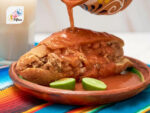



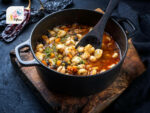
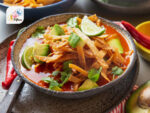



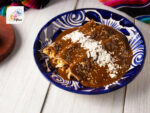


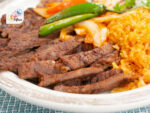
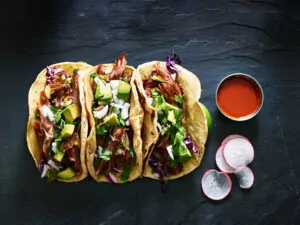
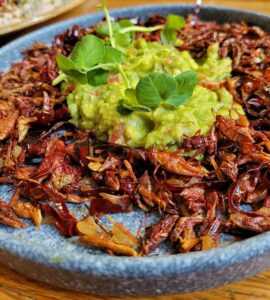
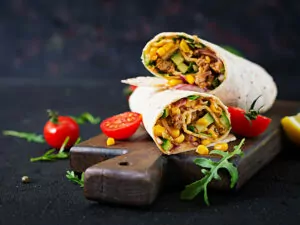
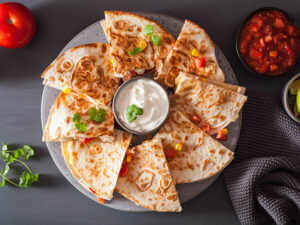

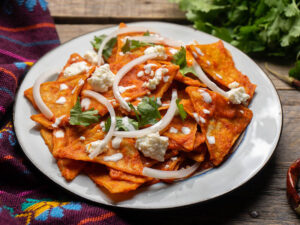
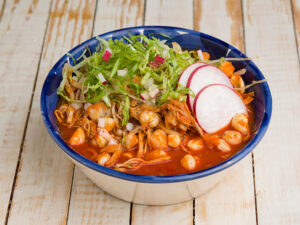
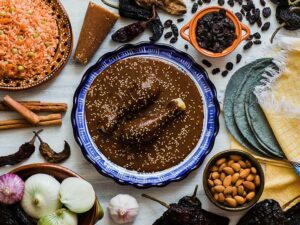
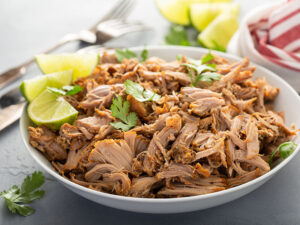
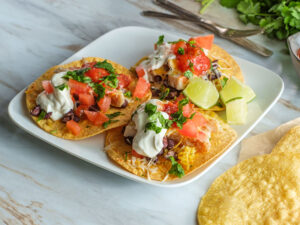
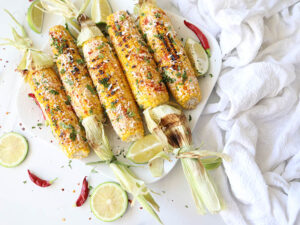
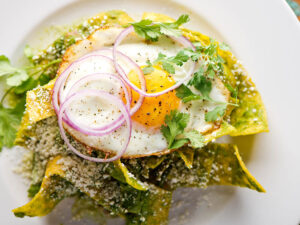
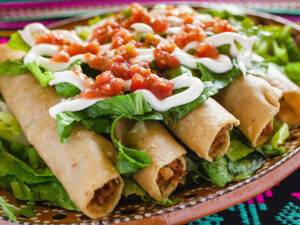
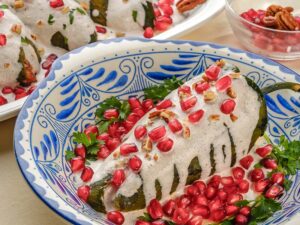
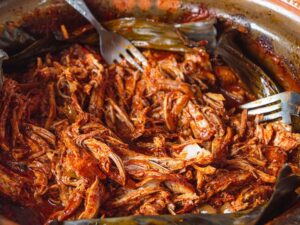
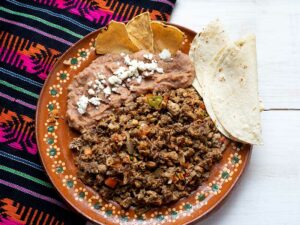
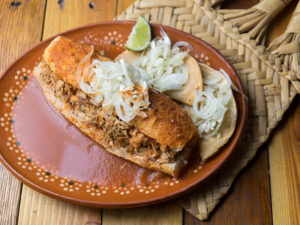
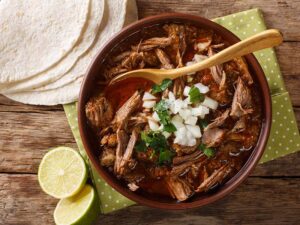
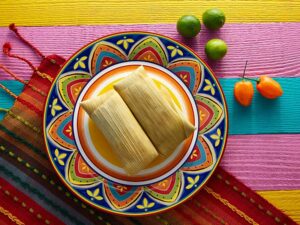
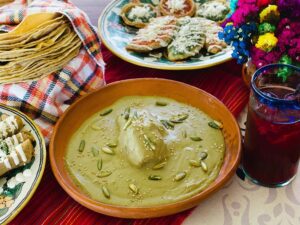
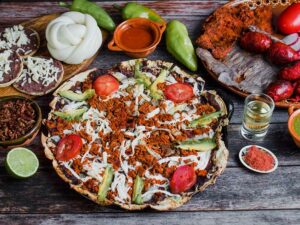
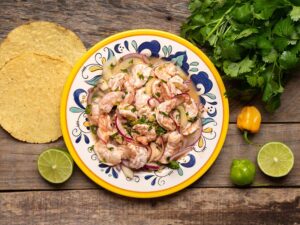
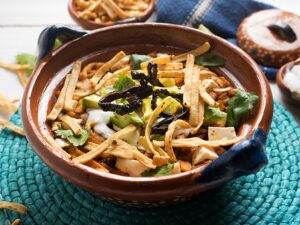

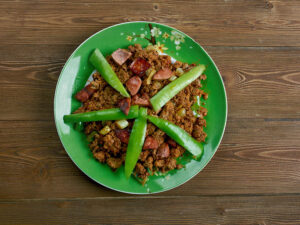
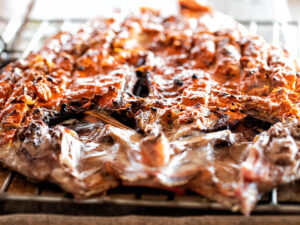
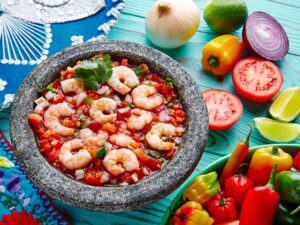
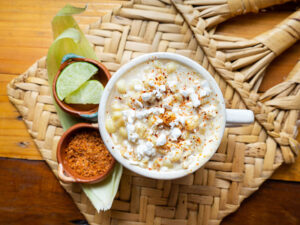
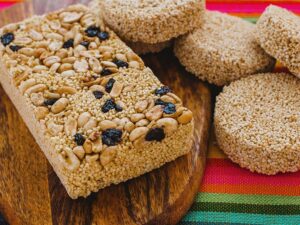

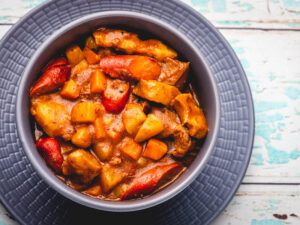
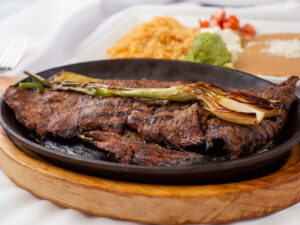
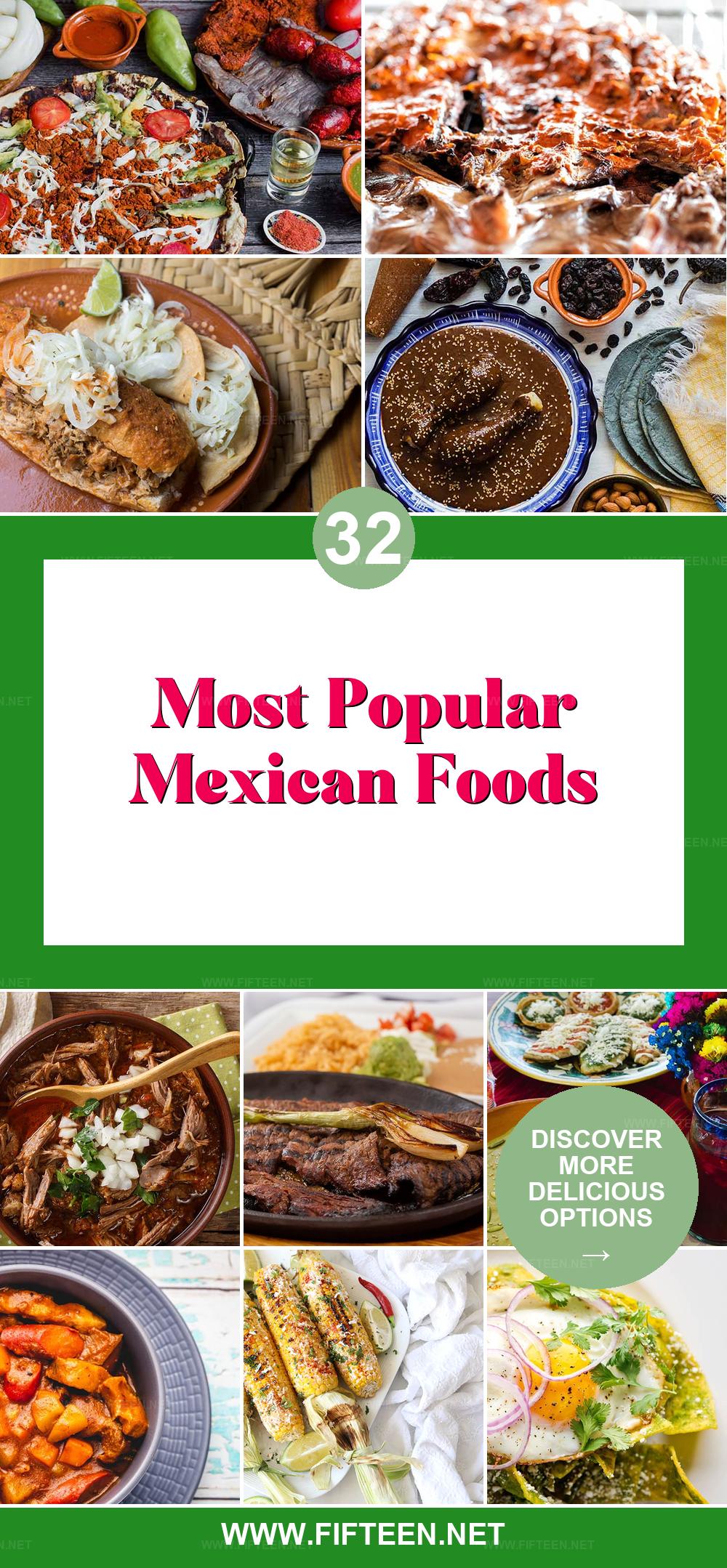
Jamie Scott
Editor in Chief, Senior Content Writer
Expertise
Home Cooking, Meal Planning, Recipe Development, Baking and Pastry, Food Editor, Cooking-video Maker, Western Food Evaluation Expert
Education
Le Cordon Bleu College of Culinary Arts
Local Community College, New York, NY
Jamie Scott is a skilled culinary expert and content creator specializing in Western cuisine. With over 15 years in the culinary field and formal training from Le Cordon Bleu, Paris, Jamie deeply understands how to blend nutrition with delicious flavors. His passion for cooking matches his commitment to making healthy eating accessible and enjoyable.
On Fifteen.net, Jamie brings a fresh perspective to classic dishes and beverages, offering readers insightful recipes, cooking tips, and a fresh view on meal planning that emphasizes taste, health, and simplicity.